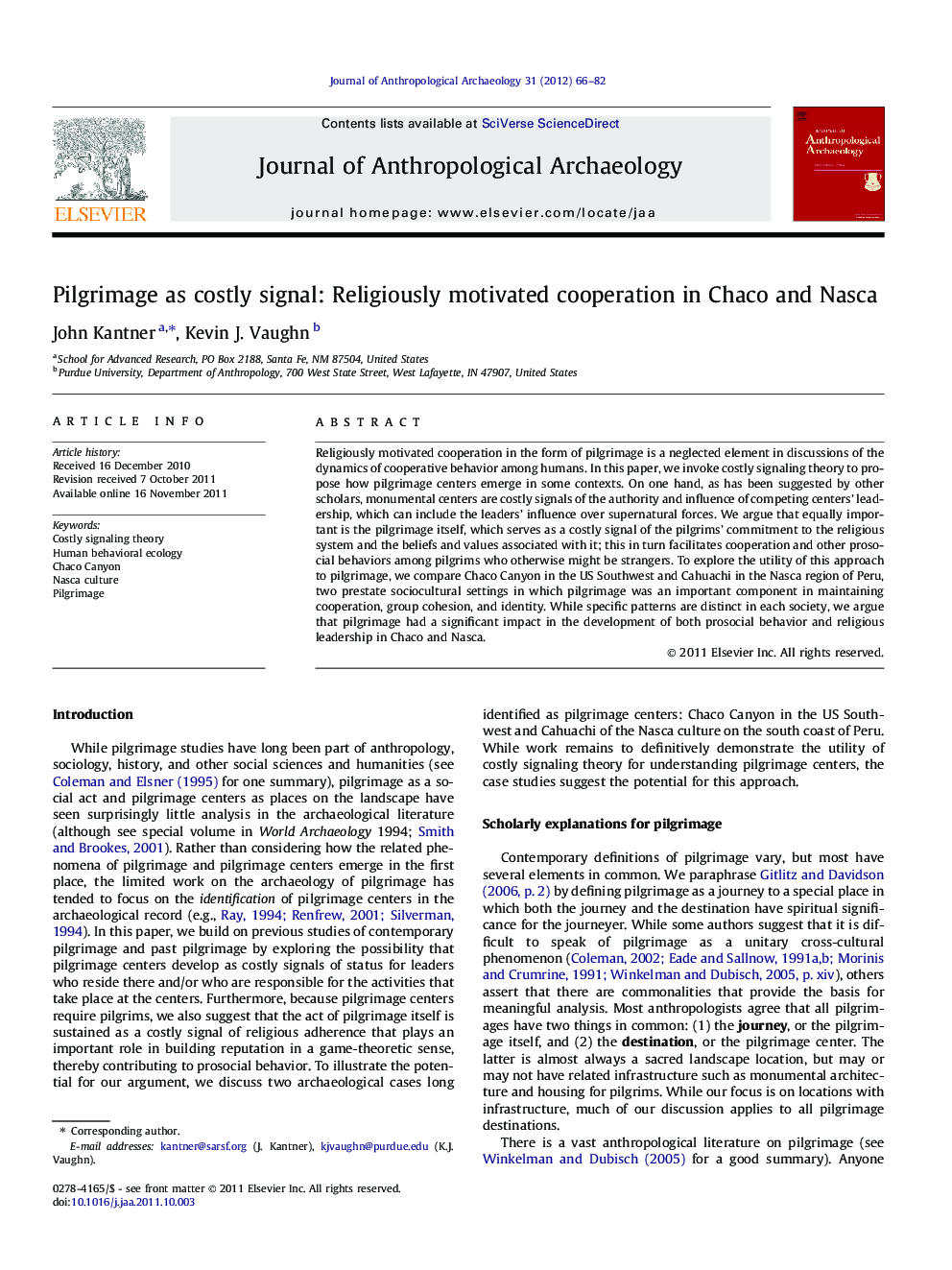| Article ID | Journal | Published Year | Pages | File Type |
|---|---|---|---|---|
| 1035011 | Journal of Anthropological Archaeology | 2012 | 17 Pages |
Religiously motivated cooperation in the form of pilgrimage is a neglected element in discussions of the dynamics of cooperative behavior among humans. In this paper, we invoke costly signaling theory to propose how pilgrimage centers emerge in some contexts. On one hand, as has been suggested by other scholars, monumental centers are costly signals of the authority and influence of competing centers’ leadership, which can include the leaders’ influence over supernatural forces. We argue that equally important is the pilgrimage itself, which serves as a costly signal of the pilgrims’ commitment to the religious system and the beliefs and values associated with it; this in turn facilitates cooperation and other prosocial behaviors among pilgrims who otherwise might be strangers. To explore the utility of this approach to pilgrimage, we compare Chaco Canyon in the US Southwest and Cahuachi in the Nasca region of Peru, two prestate sociocultural settings in which pilgrimage was an important component in maintaining cooperation, group cohesion, and identity. While specific patterns are distinct in each society, we argue that pilgrimage had a significant impact in the development of both prosocial behavior and religious leadership in Chaco and Nasca.
► Pilgrimage centers can be seen as costly signals of the power of the centers’ leaders. ► Pilgrimage is proposed to serve as costly signals of pilgrims’ religious adherence. ► Both costly signals promote prosocial behavior by promoting cooperation. ► Certain social, political, and ecological contexts stimulate pilgrimage behaviors. ► The histories of two pilgrimage centers are consistent with the costly signal model.
